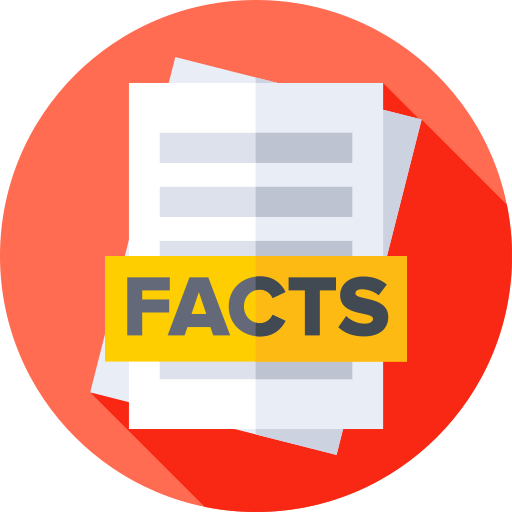Nigeria - Geography

Here, let us take a look at the Geography of Nigeria. The Niger River enters the country in the northwest and flows southward through tropical rain forests and swamps to its delta in the Gulf of Guinea. Mother's mean age at first birth is 20.4 years (2018 est.) (Note: data represents median age at first birth among women 25-49), whereas, the Maternal mortality ratio is 1,047 deaths/100,000 live births (2020 est.)
Geographical data of Nigeria
| Location | Western Africa, bordering the Gulf of Guinea, between Benin and Cameroon |
|---|---|
| Geographic coordinates | 10 00 N, 8 00 E |
| Map references | Africa |
| Tarrain | southern lowlands merge into central hills and plateaus; mountains in southeast, plains in north |
| Natural Resources | natural gas, petroleum, tin, iron ore, coal, limestone, niobium, lead, zinc, arable land |
| Natural Hazards | periodic droughts; flooding |
| Irrigated Land | 2,188 sq km (2017) |
| Major rivers (by length in km) | Niger river mouth (shared with Guinea [s], Mali, Benin, and Niger) - 4,200 km note – [s] after country name indicates river source; [m] after country name indicates river mouth |
| Major aquifers | Lake Chad Basin, Lullemeden-Irhazer Aquifer System |
| Land Boundaries | 4,477 km |
| Border Countries | Benin 809 km; Cameroon 1,975 km; Chad 85 km; Niger 1,608 km |
| Coastline | 853 km |
| Climate | varies; equatorial in south, tropical in center, arid in north |
| Area | |
| Total Area | |
| Land Area | 910,768 sq km |
| Water Area | 13,000 sq km |
| comparative Area | about six times the size of Georgia; slightly more than twice the size of California |
| Maritime Claims | |
| Territorial sea | 12 nm |
| Exclusive economic zone | 200 nm |
| Continental shelf | 200-m depth or to the depth of exploitation |
| Elevations | |
| Highest point | Chappal Waddi 2,419 m |
| Lowest point | Atlantic Ocean 0 m |
| Mean elevation | 380 m |
| Land Use | |
| Agricultural land | 75.8% (2022 est.) |
| Agricultural land: arable land | arable land: 40% (2022 est.) |
| Agricultural land: permanent crops | permanent crops: 8.4% (2022 est.) |
| Agricultural land: permanent pasture | permanent pasture: 27.3% (2022 est.) |
| Forest | 23.1% (2022 est.) |
| Other | 1.1% (2022 est.) |
Population Distribution
Largest population of any African nation; significant population clusters are scattered throughout the country, with the highest density areas being in the south and southwest as shown in this population distribution map
People and Society
In Nigeria, the different Ethnic groups are such that we have: Hausa 30%, Yoruba 15.5%, Igbo (Ibo) 15.2%, Fulani 6%, Tiv 2.4%, Kanuri/Beriberi 2.4%, Ibibio 1.8%, Ijaw/Izon 1.8%, other 24.9% (2018 est.)
| Population | |
|---|---|
| Pop growth rate | 2.52% (2024 est.) |
| Birth rate | 33.8 births/1,000 population (2024 est.) |
| Death rate | 8.4 deaths/1,000 population (2024 est.) |
| Health expenditure | 4.1% of GDP (2021) |
| Physicians Density | |
| Hospital bed Density | |
| Total fertility rate | 4.52 children born/woman (2024 est.) |
| Gross reproduction rate | 2.19 (2024 est.) |
| Contraceptive prevalence rate | 16.6% (2018) |
| Est married women (ages 15-49) | 66.2% (2023 est.) |
| Literacy | age 15 and over can read and write |
| Education expenditures | 0.5% of GDP (2013) |
| Net Migration rate | -0.2 migrant(s)/1,000 population (2024 est.) |
| Nationality | Nigerian | Nigerian(s) |
| Languages | English (official), Hausa, Yoruba, Igbo (Ibo), Fulani, over 500 additional indigenous languages |
| Religions | Muslim 53.5%, Roman Catholic 10.6%, other Christian 35.3%, other 0.6% (2018 est.) |
| Age Structure | |
| 0-14 years | 40.4% (male 48,856,606/female 46,770,810) |
| 15-64 years | 56.2% (male 66,897,900/female 66,187,584) |
| 65 years and over | 3.4% (2024 est.) (male 3,759,943/female 4,274,287) |
| Dependency Ratios | |
| Total dependency ratio | 86 |
| Youth dependency ratio | 80.6 |
| Elderly dependency ratio | 5.5 |
| Potential support ratio | 18 (2021 est.) |
| Median Age | |
| Total | 19.3 years (2024 est.) |
| Male | 19.1 years |
| Female | 19.6 years |
| Urbanization | |
| Urban population | 54.3% of total population (2023) |
| Rate of urbanization | 3.92% annual rate of change (2020-25 est.) |
| Major urban areas (Pop) | 15.946 million Lagos, 4.348 million Kano, 3.875 million Ibadan, 3.840 million ABUJA (capital), 3.480 million Port Harcourt, 1.905 million Benin City (2023). |
| Sex Ratio | |
| At birth | 1.06 male(s)/female |
| 0-14 years | 1.04 male(s)/female |
| 15-64 years | 1.01 male(s)/female |
| 65 years and over | 0.88 male(s)/female |
| Total population | 1.02 male(s)/female (2024 est.) |
| Infant Motality | |
| Total | 53.7 deaths/1,000 live births (2024 est.) |
| Male | 58.9 deaths/1,000 live births |
| Female | 48.2 deaths/1,000 live births |
| Life Expectancy at birth | |
| Total population | 62.2 years (2024 est.) |
| Male | 60.4 years |
| Female | 64.2 years |
| Drinking Water Sources | |
| Improved: urban | urban: 95.3% of population |
| Improved: rural | rural: 68.8% of population |
| Improved: total | total: 82.6% of population |
| Unimproved: urban | urban: 4.7% of population |
| Unimproved: rural | rural: 31.2% of population |
| Unimproved: total | total: 17.4% of population (2020 est.) |
| Sanitation facility acess | |
| Improved: urban | urban: 81.6% of population |
| Improved: rural | rural: 41.4% of population |
| Improved: total | total: 62.3% of population |
| Unimproved: urban | urban: 18.4% of population |
| Unimproved: rural | rural: 58.6% of population |
| Unimproved: total | total: 37.7% of population (2020 est.) |
| Alcohol consumption per capita | |
| Total | 4.49 liters of pure alcohol (2019 est.) |
| Beer | 0.73 liters of pure alcohol (2019 est.) |
| Wine | 0.09 liters of pure alcohol (2019 est.) |
| Spirits | 0.4 liters of pure alcohol (2019 est.) |
| Other alcohols | 3.27 liters of pure alcohol (2019 est.) |
| Tobacco use | |
| Total | 3.7% (2020 est.) |
| Male | 6.9% (2020 est.) |
| Female | 0.5% (2020 est.) |
| Child marriage | |
| Women married by age 15 | 12.3% |
| Women married by age 18 | 30.3% |
| Men married by age 18 | 1.6% (2021 est.) |
Demographic profile
All Important Facts about Nigeria
Want to know more about Nigeria? Check all different factbooks for Nigeria below.









